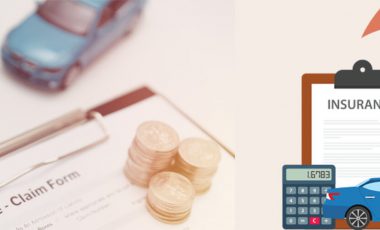No Fault Car Insurance: Everything You Need to Know
More than 42000 crashes occurred in the US in 2022 out of which more than 40,000 deaths were recorded. The number of road accidents is increasing every year and with that the need to buy no-fault car insurance is also increasing.
There are chances that you get into an accident where you were not even at the fault. But your family or friends who were in the car got injured. The medical cost and guilt can be difficult to bear as a result it is important to have no fault insurance.
What is No Fault Insurance?
In the event that you and your passengers are injured in an accident, your no fault insurance will pay for any medical fees and other expenditures linked to the injuries sustained. Even if the other driver was the one who caused the accident, you can file a claim for compensation for your injuries through the no-fault provision of your own personal injury protection (PIP) policy. This will prevent your injuries from being covered by the bodily injury liability coverage of the other driver.
Your injuries are covered by no-fault car insurance after an accident, but depending on the laws in your state, you may still be able to file a liability claim with the insurance company of the other driver if the accident they caused resulted in serious injuries for you. This is the case even if your injuries were covered by no-fault car insurance.
After an accident, if you have no-fault insurance coverage, your insurance coverage will pay for your medical expenses, but it will not pay for any damage to your vehicle. The driver who was found to be at blame for the accident is the one who is responsible for paying for any property damage that was caused to the other driver as a result of the collision.
How does no-fault insurance work?
No-fault auto insurance is designed to lessen the burden on the judicial system caused by lawsuits arising from auto accidents. In most no fault insurance states, you may only claim for serious injuries or pain and suffering if the damages exceed a specified threshold.
One key principle of no-fault car insurance regulations is limiting people’s ability to seek compensation from at-fault drivers for their own injuries and suffering. Nonetheless, depending on state auto insurance rules, drivers are frequently entitled to seek reimbursement for significant injuries. To qualify, an injury often has to be:
- Death
- Disfigurement
- Bones broken
- Dismemberment
- Fetal death
Which type of coverage included in no-fault insurance policy?
The liability section of a no-fault car insurance policy covers both property damage and bodily injury to third parties.
In the event that you cause an accident that causes property damage to another person’s car or other property, your property damage liability coverage will reimburse the victim.
The bodily injury liability coverage covers for medical fees and associated charges if you are found at fault for an accident that injures another person. Both a per-person bodily injury liability limit and an accident bodily injury liability limit may be included in your insurance.
In the event of an accident, none of these coverages will pay for your medical bills or those of your passengers. This is where personal injury protection (PIP) comes into play inside a no-fault auto insurance.
Personal injury protection insurance enables you to submit a claim for medical bills and other expenditures related to an automobile accident, regardless of who was at fault. Depending on your insurance, PIP coverage may also repay you for missed income or cover the cost of hiring someone to do normal home activities while you recuperate from an accident.
Each state requires you to carry a certain level of personal injury protection coverage as part of a no fault insurance coverage.
For instance, you may require PIP coverage of $10,000, $20,000, or up to $50,000. Also subject to minimum coverage limits are bodily injury liability insurance and property damage liability insurance.
States also have varying regulations about no-fault insurance coverage. In Michigan car insurance laws, for instance, PIP insurance will cover all reasonable and necessary medical bills with no cap. It also covers up to 85 percent of lost income if an accident-related injury prevents you from working.
The advantages of no-fault car insurance
- Since fault is irrelevant, drivers may have their medical claims compensated immediately after an accident.
- Insurance companies spend less on lawsuits and pass the savings on to their consumers.
- The PIP needed in no-fault jurisdictions covers other expenditures, such as child care and home services, in addition to medical bills.
Types of No Fault Car Insurance
It is important for drivers to be familiar with the various no-fault auto insurance rules that exist in their state. The sort of no-fault insurance system that is in place in the state in which you reside will determine which types of coverage you are required to purchase as well as how your policy will operate in the event of an accident.
Traditional No-fault insurance is the most widespread and popular of the no-fault car insurance system. No-fault auto insurance is when the state needs you to get personal injury protection for your own damages and inhibits when you can file a lawsuit for injuries after an accident. This is the broadest and most common form of the no-fault system.
Choice no fault insurance, on the other hand, differs from traditional no-fault insurance coverage regulations in that it gives policyholders the option of purchasing either a no-fault auto insurance or a conventional liability insurance policy. Each of the systems from which you might pick will have a unique set of regulations regarding insurance and legal proceedings.
No-fault add-on coverage is available in places where drivers are not required to get no-fault insurance coverage. If you decide to add personal injury protection, you may use your own insurance to cover any injuries you get in a collision and also file claims against the party who was at fault for the accident.
Which States have No Fault Insurance?
Whoever is harmed in a collision must turn to their own auto insurance coverage first. Remember that in these states, unless the facts of your auto accident claim allow you to “step outside” of no-fault insurance under the statutory threshold, you will not be entitled to collect “pain and suffering” damages related to the accident and your injuries.
Here are the real no fault insurance states where PIP insurance coverage is required:
- Delaware
- Florida
- Hawaii
- Kansas
- Kentucky
- Massachusetts
- Michigan
- Minnesota
- New Jersey
- New York
- North Dakota
- Oregon
- Pennsylvania
- Utah
PIP is optional in numerous other states; hence, these states are not regarded as real auto insurance no-fault states. The following are:
- Arkansas
- Columbia
- Maryland
- Texas
- Washington
A “hybrid” or “choice no-fault” system is in place in New Jersey, Pennsylvania, and the District of Columbia. This means that drivers in these states and the District of Columbia can choose between no-fault car insurance and traditional liability-based insurance at the time of policy acquisition, and in some cases, even after an accident has occurred.
Finally, in the auto insurance no-fault states, no fault insurance coverage is required in certain jurisdictions, including Delaware and Oregon, but a plaintiff’s ability to pursue standard transactions from the at-fault driver or other party is unrestricted in the aftermath of an accident.
How to buy No Fault Insurance?
Buying no-fault insurance is straightforward if you reside in no fault insurance states where personal injury protection is mandatory or optional. Before making a purchase, there are a few factors to consider to guarantee you have the greatest coverage at the lowest cost.
- Determine how much you need: As described in the list of states with no fault insurance, each state has its own minimum coverage requirements. However, the minimum quantity required is little. If you reside in a state that has a relatively low minimum level of personal injury protection and depending on the kind of health insurance you have, if any, you may choose to get extra coverage if you can afford it.
- Understand what is Discussed: PIP insurance is not a one-size-fits-all automobile insurance solution. It solely covers medical costs for passengers in the car. The majority of states mandate that you carry a minimum level of liability auto insurance to cover damages to other people’s property (such as their vehicle) and medical expenses. Optional collision insurance covers the cost of damages to your own vehicle.
- There exists a deductible: When calculating the cost of no-fault auto insurance, including the deductible. It is the amount you must pay out-of-pocket before your auto insurance kicks in to cover the remainder. The common deductible amount is $500 or $1,000, however state-specific minimums vary.
- Browse around: As with any sort of no-fault auto insurance, it is wise to get numerous rates. The same coverage might be much more affordable with a single provider.
After a No Fault Accident, does the Insurance Premium increase?
No, Your automobile insurance premiums should not go up as a result of an accident in which you were not at fault. This is due to the fact that the insurance company of the person who caused the accident will be liable for paying for your medical bills and repairing your car. Your insurance rates will not increase if your insurer does not have to pay out any claims or expenses.
A no-fault claim is one that is made against the vehicle insurance policy of the motorist who was found to be at fault in an accident. This occurs in practically every state.
If you are not at fault in an accident and you make a claim against the person who was responsible for the collision, it is quite unlikely that your auto insurance premiums would go up as a result of your actions. Even if you have to submit a claim against your own insurance policy, some insurance companies will not raise your premiums as a result of the fact that you did not cause the accident that caused the damage.
But there are some exceptions:
However, if you have a history of causing accidents or filing claims, your auto insurance premiums may increase after an incident in which you were not at fault.
According to the Consumer Federation of America (CFA), auto insurance premiums rise by an average of 10 percent for drivers who have been involved in incidents that were not their fault.
It also depends on your insurance company: You should be aware that various insurance companies will raise rates in their own unique ways if your premiums do go up as a result of a collision in which you were not at fault. There is a possibility that your rates may go up by ten percent with certain providers, while others may just increase them by two percent.
In addition, the laws of several jurisdictions, such as California and Oklahoma, prohibit insurance firms from raising premiums after the filing of a claim for which the insured was not at fault.
How much is the No Fault Insurance?
Costs for no fault insurance coverage vary by insurer, policy limitations, and area. In principle, no-fault insurance should reduce insurance costs, but in fact, no-fault jurisdictions have higher insurance rates than at-fault ones.
A portion of the explanation is that some jurisdictions require drivers to acquire additional coverage. So, in addition to the liability insurance required by all jurisdictions, drivers in no-fault insurance states must also pay for PIP.
No-fault insurance coverage that covers the statutory amounts of personal injury protection costs $1,907 annually on average for drivers who have never been involved in an accident. After an accident, no-fault insurance costs $2,825 a year, a 48% increase.
FAQs about No-Fault insurance
-
Will no fault insurance cover my car repairs?
No, no fault insurance will not cover the cost of auto repairs after an accident. Even in no-fault jurisdictions, the at-fault motorist is liable for paying for property damage. After an accident, drivers in no-fault jurisdictions are required to utilize their own personal injury protection (PIP) insurance to cover their medical bills.
-
What kind of damages are covered under no fault insurance?
If you have no fault insurance, the other driver is still liable for paying for your medical bills after an accident even if they were the one who caused it. Your no fault insurance coverage would, in the event of an accident, cover for your medical expenses, lost earnings, and maybe other losses, depending on the state in which you reside.
-
Can you sue if you have no fault insurance?
Your capacity to file a lawsuit may be restricted by regulations governing no-fault insurance. If you have no-fault insurance, you often won’t be able to file a lawsuit unless the injuries you or your passengers sustained are either very severe or surpass a predetermined monetary threshold.
-
Is it required to have no fault insurance?
Most states don’t mandate no-fault insurance. On the other hand, if your state requires you to have personal injury protection, you are required to buy at least the minimum amount of coverage required by your state. You are also needed to get any necessary property damage liability coverage, as well as uninsured motorist coverage and underinsured motorist coverage, if applicable.
-
Is it necessary to cooperate with your insurance company while making a no-fault claim?
When filing a claim under the no-fault system, the standard protocols for working with an insurance provider in the context of a personal injury lawsuit are often ignored. In most cases, the law of the state compels you to comply with your insurance in the event of a no-fault claim. Your insurance provider may have reasons to reject the claim if you do not comply with the procedure while it is being carried out.

We generated 12,100,000+ Quotes (...counting), Helping People to Save Money and Time.
Editorial Guidelines: The above is meant as general information to help you understand the different aspects of auto insurance. This information does not refer to any specific auto insurance policy. Coverages and other features vary between insurers, vary by state, and are not available in all states. References to costs of coverages/repair, average or typical premiums, amounts of losses, deductibles, etc., are indicative and may not apply to your situation. We encourage you to speak to our insurance representative and to read your policy contract to fully understand your coverages.
Featured Posts

Cheapest Car Insurance After a DUI: Discover Wallet-Friendly Options

Cheap Liability-Only Car Insurance for 2024: Complete Guide

